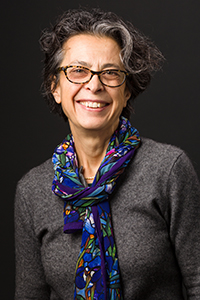Watching Patient-Derived Brain Cells Take Shape in the Lab Reveals Autism Defect
Watching Patient-Derived Brain Cells Take Shape in the Lab Reveals Autism Defect
By coaxing cells from autistic people to grow into brain-like clusters of cells in the laboratory, scientists have uncovered a developmental flaw that skews the balance of excitatory and inhibitory neurons. The findings, which were reported July 16th in the journal Cell, suggest that overproduction of certain cell types during early development could lead to faulty wiring in the brains of people with autism.
The study was led by Flora M. Vaccarino, M.D., Ph.D., a 2011 NARSAD Distinguished Investigator at Yale University who also received Independent Investigator grants in 2000 and 2003 and Young Investigator grants in 1990 and 1994. NARSAD 2013 Young Investigator Gianfilippo Coppola, Ph.D. was also a member of the scientific team.
To follow early brain development in cells with the same genetic makeup as those in people with autism, Dr. Vaccarino's team sampled skin cells from four people with the disorder and then reprogrammed them to redevelop as neurons. (This remarkable technology is explained here.) The four individuals all had abnormally large heads, a trait that often occurs in those with severe autism.
The scientists watched as the reprogrammed cells divided, became more specialized, and organized themselves into structures called organoids, composed of neurons at a developmental stage equivalent to the first trimester of human fetal development. The team monitored the cells’ development by studying the genetic and physiological features of the organoids. They compared the organoids derived from the cells of people with autism to a second set of brain organoids derived from cells of those individuals' fathers who did not have autism. In the patient-derived organoids, they found an overabundance of inhibitory neurons, which dampen the signals of other cells. Cells in the autism-derived organoids also divided more quickly than those in the organoids derived from the cells of unaffected individuals.
The researchers were able to attribute the excessive numbers of inhibitory neurons at least in part to the overactivity of a gene called FOXG1. When they grew new brain-like organoids––again using cells from the same autistic individuals but this time artificially decreasing the expression of the FOXG1 gene––some of the key developmental defects did not appear. Perhaps most importantly, the normal balance of excitatory and inhibitory neurons was restored.
The findings suggest that measuring FOXG1 activity could help clinicians more accurately diagnose autism spectrum disorders. They also suggest that targeting FOXG1 may be an effective strategy for developing new drugs to treat autism.



